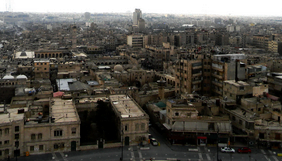On March 19, 2011 forces loyal to the late Muammar Gaddafi amassed outside the rebel held stronghold of Benghazi. Gaddafi dispelled any illusions of what would happen should the city fall to the loyalists; “rats and cockroaches” was the term he used to describe anti-regime elements. Rebel fighters were able to hold off the first wave of attacks in the morning. By the afternoon, the Security Council has passed resolution 1973, authorizing “any means necessary” to implement a no-fly zone in Libya. By the evening, French war planes strafed Gaddafi’s tanks and armaments.
We can never know what might have happened should Benghazi have falled to Gaddafi forces. But all indications suggest that a massacre of Benghazi averted.
Over one year later, Syrian loyalist forces are moving tanks and heavy weaponry toward Aleppo, the country’s largest city and commercial center. There are already reports of helicopters firing on neighborhoods. As I write, Assad forces are massing at the city’s outskirts and rebels are entrenching themselves in preparation for the assault. The UN is warning that the siege and sacking the city may follow a familiar pattern in which shelling and heavy arms attacks are followed up by invading militias and armed forces going home to home. The USA similarly fears that Assad is preparing for a massacre.
This time, there will be no 11th hour intervention. French fighter jets will not be coming to the rescue. Rather, rebel fighters and the better armed Syrian forces are about to duke it out in a city of 2 million people. It is going to get ugly.
It is not unreasonable to speculate that “Aleppo” may soon become shorthand for mass atrocity in the 21st century.
